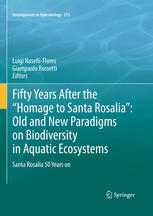

Most ebook files are in PDF format, so you can easily read them using various software such as Foxit Reader or directly on the Google Chrome browser.
Some ebook files are released by publishers in other formats such as .awz, .mobi, .epub, .fb2, etc. You may need to install specific software to read these formats on mobile/PC, such as Calibre.
Please read the tutorial at this link: https://ebookbell.com/faq
We offer FREE conversion to the popular formats you request; however, this may take some time. Therefore, right after payment, please email us, and we will try to provide the service as quickly as possible.
For some exceptional file formats or broken links (if any), please refrain from opening any disputes. Instead, email us first, and we will try to assist within a maximum of 6 hours.
EbookBell Team

5.0
38 reviewsThis book celebrates the fiftieth anniversary of publication of one of the landmarks of the modern ecological thought: the “Homage to Santa Rosalia or why are there so many kinds of animals” by George Evelyn Hutchinson. Published in 1959 in the journal “The American Naturalist”, this article has been the engine which have moved most of the ecological research on biodiversity in the last half a century. Hutchinson starts his article by telling the legend of Santa Rosalia, a hermit who died in the second half of the XIII century and who spent the last years of her life in a cave nearby a pond. In this pond Hutchinson collected two species of aquatic insects and took the inspiration to explore the reasons why life is present on our Planet in such amazing variety of forms. This article thus inaugurated the season of research on biodiversity. Researchers and students in the field of ecology are the readers to whom this book is mainly addressed but also those involved in the history of Science will find in this book useful information. Issued in 2010, which has been declared “international Year of Biodiversity” by the United Nations, this book is also a tribute to the biological diversity allowing, enriching and sustaining human life.